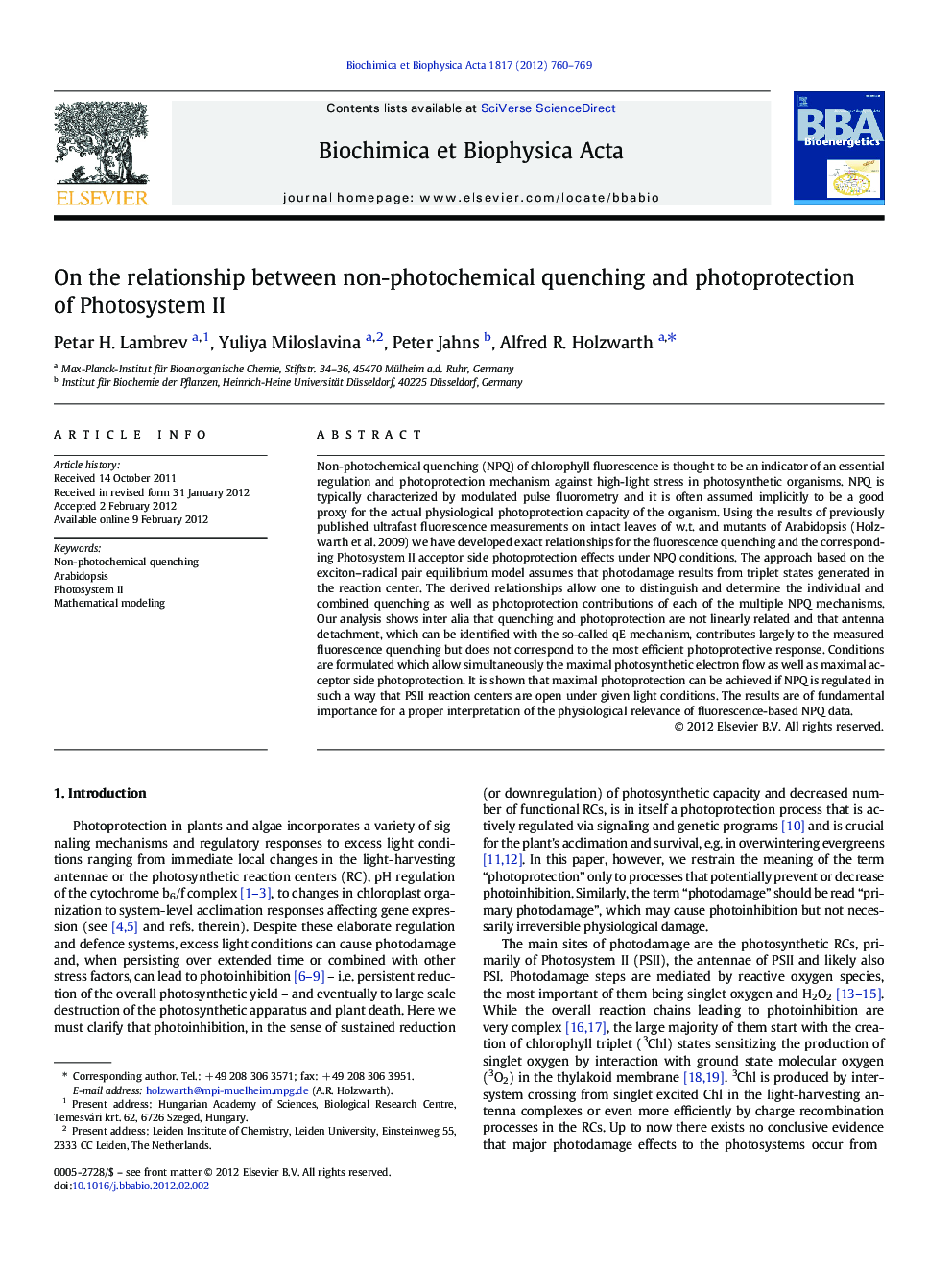| Article ID | Journal | Published Year | Pages | File Type |
|---|---|---|---|---|
| 1942460 | Biochimica et Biophysica Acta (BBA) - Bioenergetics | 2012 | 10 Pages |
Non-photochemical quenching (NPQ) of chlorophyll fluorescence is thought to be an indicator of an essential regulation and photoprotection mechanism against high-light stress in photosynthetic organisms. NPQ is typically characterized by modulated pulse fluorometry and it is often assumed implicitly to be a good proxy for the actual physiological photoprotection capacity of the organism. Using the results of previously published ultrafast fluorescence measurements on intact leaves of w.t. and mutants of Arabidopsis (Holzwarth et al. 2009) we have developed exact relationships for the fluorescence quenching and the corresponding Photosystem II acceptor side photoprotection effects under NPQ conditions. The approach based on the exciton–radical pair equilibrium model assumes that photodamage results from triplet states generated in the reaction center. The derived relationships allow one to distinguish and determine the individual and combined quenching as well as photoprotection contributions of each of the multiple NPQ mechanisms. Our analysis shows inter alia that quenching and photoprotection are not linearly related and that antenna detachment, which can be identified with the so-called qE mechanism, contributes largely to the measured fluorescence quenching but does not correspond to the most efficient photoprotective response. Conditions are formulated which allow simultaneously the maximal photosynthetic electron flow as well as maximal acceptor side photoprotection. It is shown that maximal photoprotection can be achieved if NPQ is regulated in such a way that PSII reaction centers are open under given light conditions. The results are of fundamental importance for a proper interpretation of the physiological relevance of fluorescence-based NPQ data.
► Photoprotection processes in Photosystem II were simulated using a kinetic model. ► The change in fluorescence and chlorophyll triplet yield was calculated. ► Non-photochemical quenching and photoprotection are not linearly related. ► Photoprotection by antenna quenching is more effective than antenna detachment. ► Maximal photoprotection is achieved when reaction centers are kept open.
